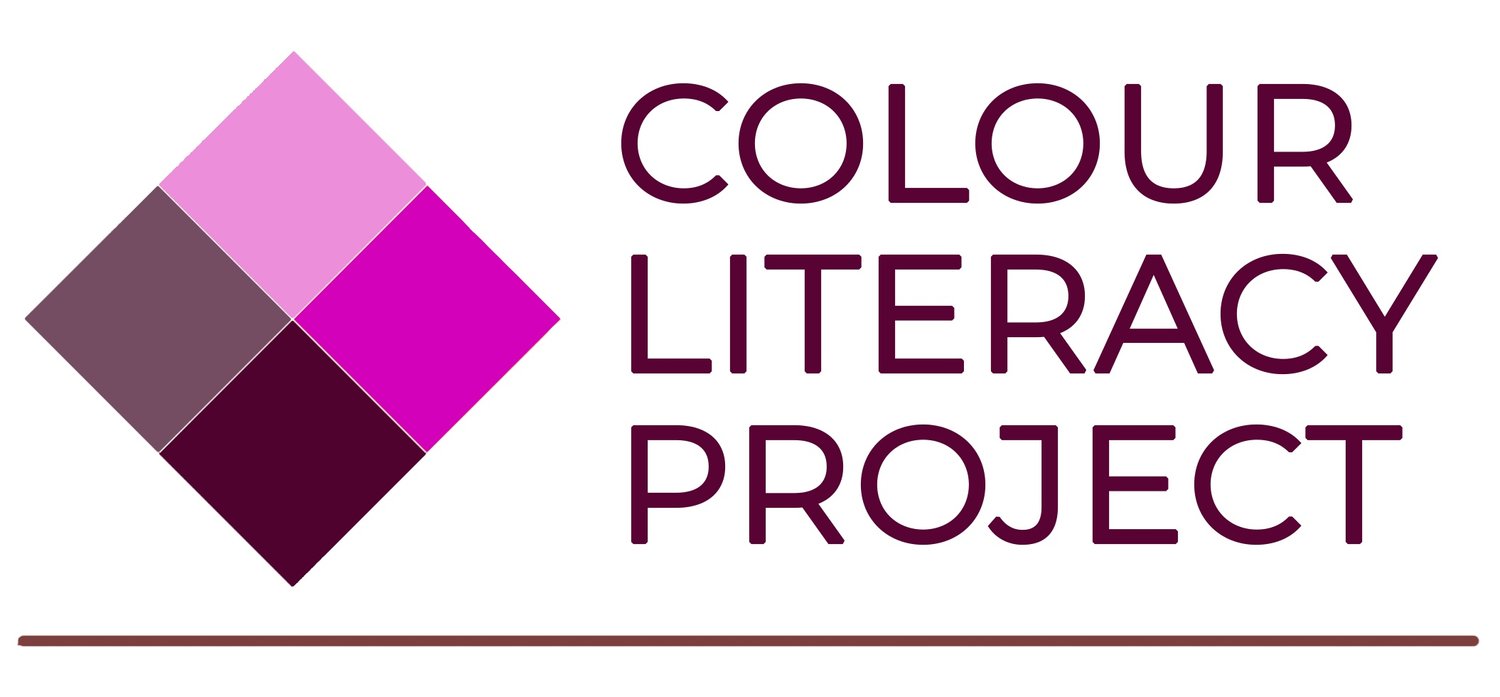Hue Planes Model
DESCRIBING COLOURS:
Colour characters
Map colour characters into hue planes
Details:
All ages
Time: 30 minutes
Learning Outcome: Map colour characters into a hue plane model
Colour Concepts: Recognize how a hue plane illustrates variations for a specific hue as part of a 3D model.
Exercise Materials:
Scissors, glue stick
Optional - metal ruler, metal stylus, bone folder
CLP PDF Handout - CHROMO Hue Planes Model
Support Materials:
Slide Deck
Teacher Guide PDF
Related Exercises:
Prep:
Figure 1: Supplies for building model.
Print out the two pages of the Hue Planes Handout in colour. (See Figure 1).
The basic supplies needed are scissors and a glue stick.
For a more finished look you an use a metal stylus and ruler for scoring the center lines and a bone folder for pressing folds.
Directions for building Hue Plane Model:
Step 1. Optional - Score a line between the top and bottom marks on each shape using the metal ruler and stylus.
Step 2: Cut out all the shapes and match in pairs as shown. (The Orange/Yellow shape will not have a match .)
Step 3: Fold each shape in half. Combine the pairs with the matching colour pointed up.
Step 4: Use a glue stick to glue the matching colour of each pair together. The photo shows getting ready to glue the two Violets sides to each other.
Step 5: Arrange the glued pairs as shown.
Step 6a: Glue the two pairs together that share a Magenta hue
Step 6b: Glue the two pairs together that share a Green hue .
Step 7. Glue together the sets that share a Blue hue.
Step 8a: Glue the Orange sides together.
Step 8b: Glue the Yellow sides together.
Completed Hue Plane model
Vocabulary:
Questions & observations:
How are the various colour attributes organized on a hue plane?
How do the four characters relate to the Grey Scale?
More to explore:
Mini Kolormondo Model
Build a Mini-Kolormondo model which shows Red, Green and Blue plus Cyan, Magenta and Yellow hue planes connected by five hue circles.
Note: The Kolormondo model is organized according to whiteness and blackness, where colours of increasing whiteness are towards the white point and increasing blackness towards the black point of the hue plane. This type of model is symmetrical. See the discussion on hue planes in the Glossary.
Also see the What’s going on? discussion for the Lightness-chroma model.
Find out more:
CLP team member Peter Donahue (a.k.a. The Color Nerd) introduces hue planes
Peter Donahue has a quick & easy colour characters model to assemble, using a pencil (!)
Check out Peter Donahue’s discussion on how using a 3D model for colours helps you establish colour harmonies














